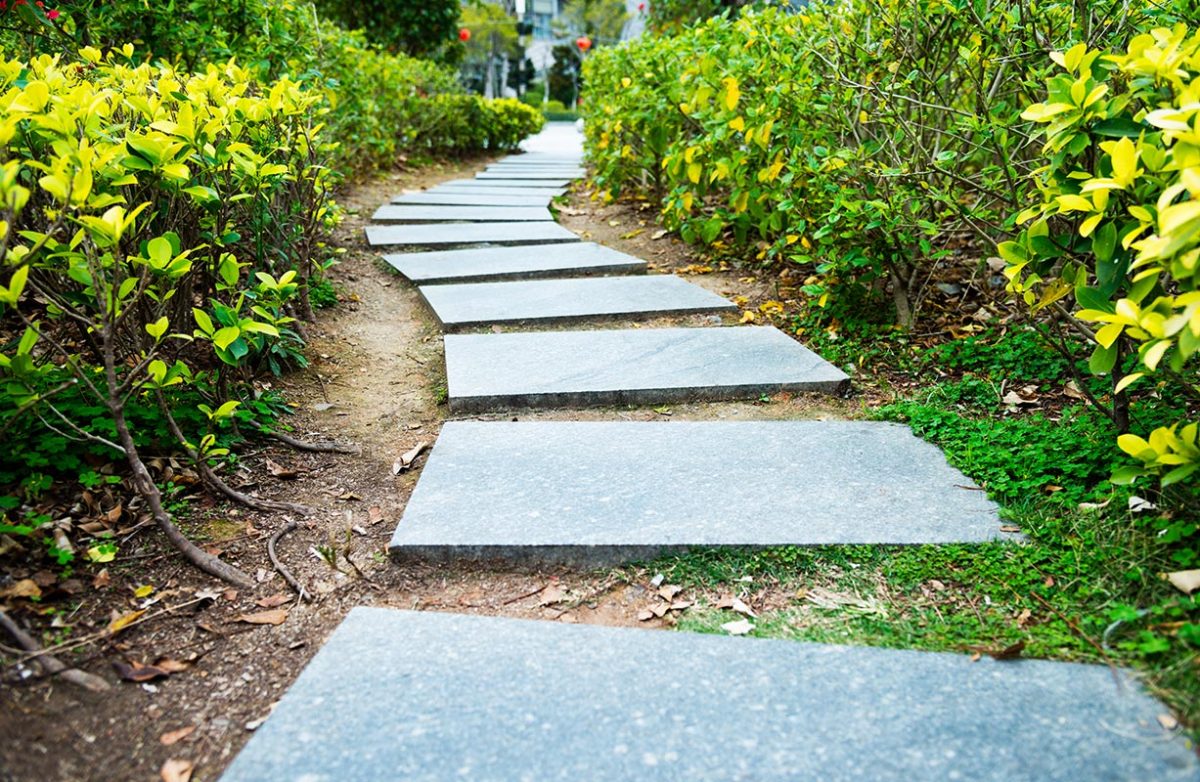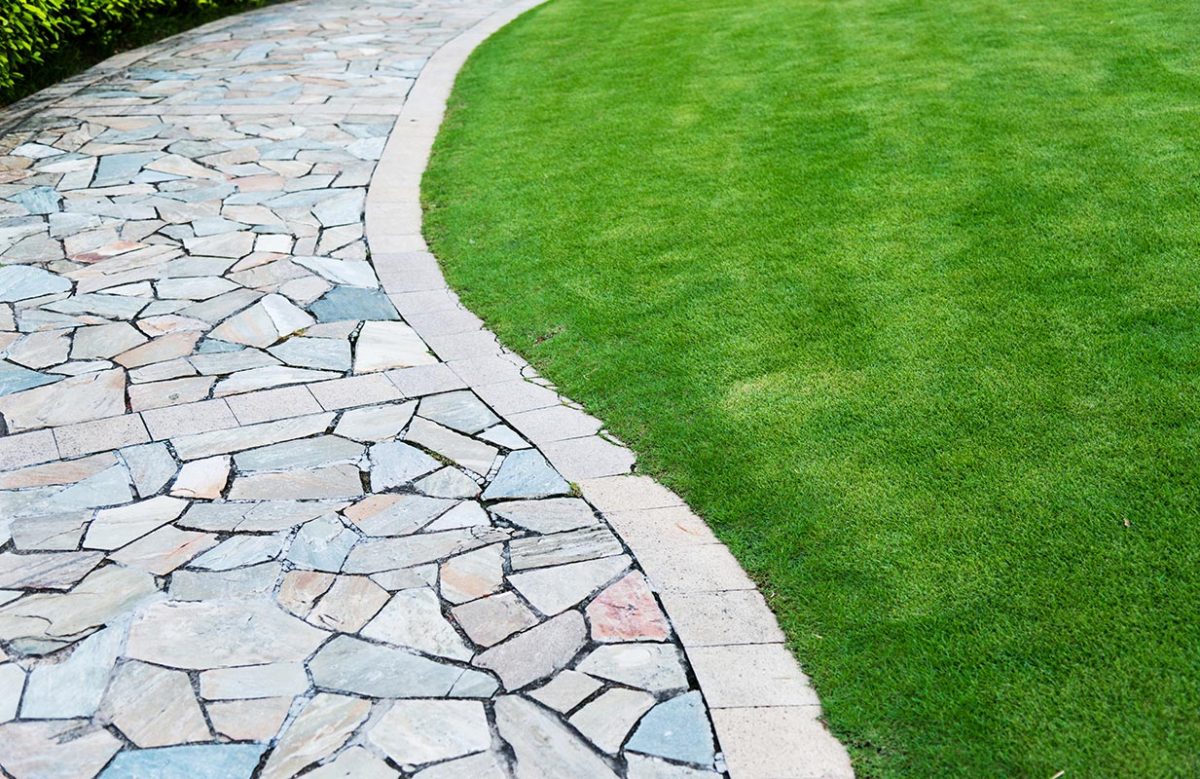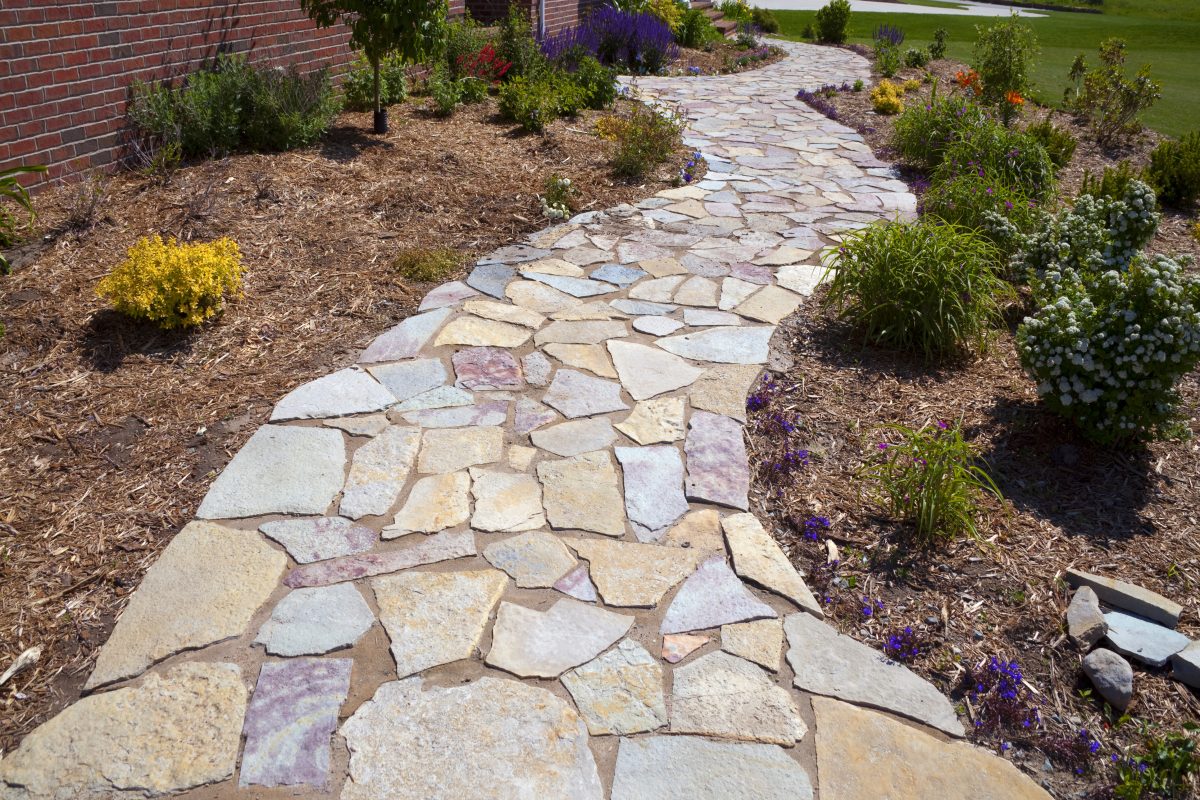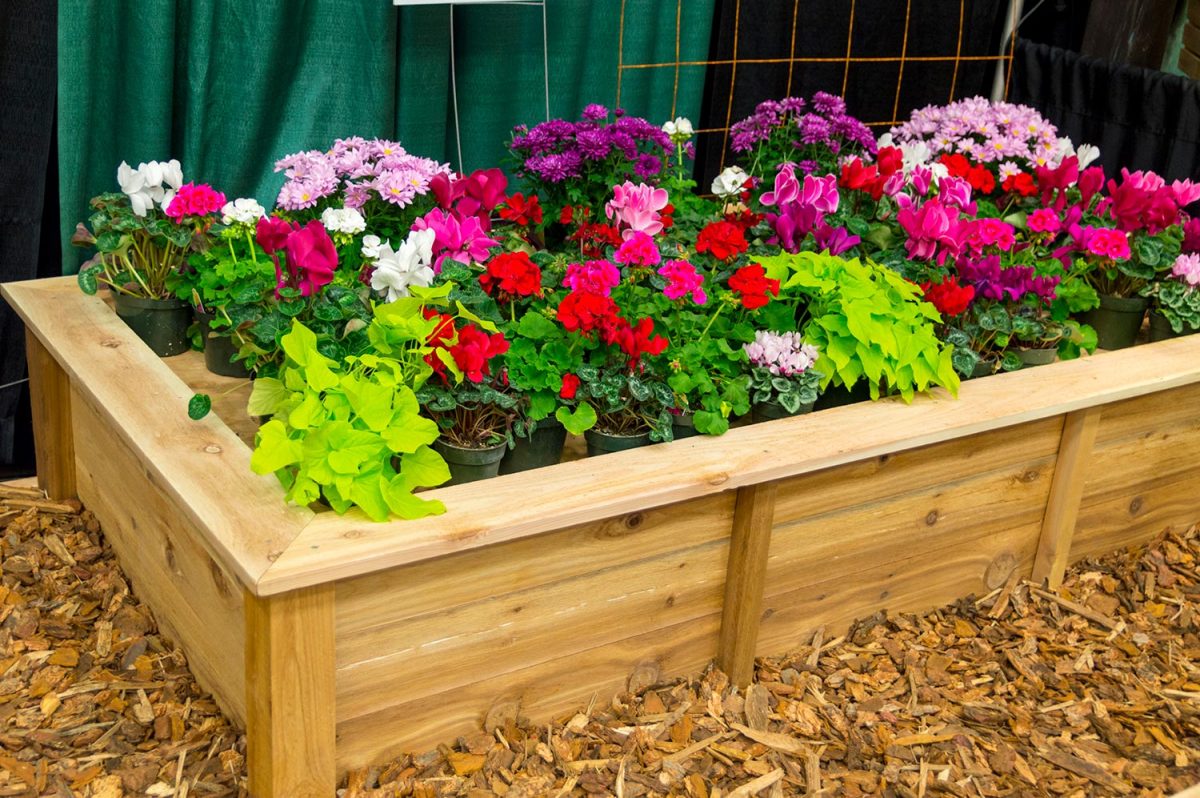Disclosure: We may get commissions for purchases made through links in this post.
Laying out a pathway in your garden is an excellent way to provide walking space for your guests. It prevents wearing down your lawn into unsightly bare patches, and it also adds a beautiful design to your lawn. However, while having stepping stones is beautiful, you might also be wondering how to maintain it and if mowing over it is possible. For your convenience, we brought you the answer.
Stepping stones that have been set into the soil can be mowed over. If your stones are set lower than your lawn, the blades of the lawnmower can pass over it with no problem. However, stepping stones that are raised above the ground should only be mowed around the perimeter. A lawn trimmer should be used to keep the grass from growing over the stones.
Now that you know that mowing over stepping stones is possible, you might also be wondering if there are other ways to keep your pathway trimmed. Good thing we've researched these topics along with other questions you have in mind. Keep on reading to learn more about maintaining your garden's stepping stones.
![Man cutting grass with lawn mower, Can You Mow Over Stepping Stones? [How To Keep Your Pathway Trimmed]](https://pavingplatform.com/wp-content/uploads/2022/03/Can-You-Mow-Over-Stepping-Stones.-800x1200.png)
Maintaining Stepping Stones
Stepping stones are attractive additions to your landscape. Not only do they add a functional path for your guests to walk on but they also make the design of your landscape look better. There are many different stepping stones you can choose from with different styles and textures like flagstone, stone pavers, or even brick.
There are many combinations that you can do when laying out your stepping stones. You can do patterns of stone and grass, stone and moss, stone and mulch, even stone and gravel to create a beautiful combination to match your current landscape.
One of the most popular ones is usually a pattern of stepping stone and grass, but many homeowners wonder how to maintain it to keep grass from growing over it.

How Do You Keep Your Pathway Trimmed?
- First, check your stepping stones closely to see if they are flush with the ground. If the stepping stones are at ground level, your lawnmower will most likely run over it without the blade hitting them.
- If your stepping stones are raised above the ground, consider lifting them and resetting them. Not only are raised stepping stones difficult to mow around but they might also be a tripping hazard for those who will be using your walkway.
- For stepping stones that are flush against the ground, simply mow around or across them.
- In the case of raised stepping stones, make sure to mow around the perimeter of them and in between them, keeping the mower's wheels on the ground. Never place your lawnmower's wheels on top of the stone because the blades might hit them.
- If the lawnmower cannot move in between the stepping stones, consider using a lawn trimmer instead to cut the grass around and in between the stones.
How Far Should Stepping Stones Be Apart?

If you are thinking of adding stepping stones to your landscape, you might also be wondering how far you should set them apart.
Fortunately, there is a standard measurement for laying out stepping stones. Place your stepping stones about 24 inches from the center as a standard spacing for your stones. This is just about the distance of an average human stride which makes this spacing perfect for most adults.
Another option is to lay down markers for your stepping stones based on your stride. Try getting the average stride distance of those who will be using your pathway to ensure the correct placement of your stepping stones. You can do this by measuring the middle of one foot to the other as you walk naturally and marking the locations properly on the ground.
What Can I Use For Walkway Edging?

Aside from stepping stones, another way to add appeal to your landscape is to add edging to your walkway. This helps your walkway have a tidy, finished look, and it keeps gravel, mulch, and plants off your path. Here are some materials you can use as edging for your walkway.
1. Flagstone

Depending on the pathway material that you have used, you can also use flagstone as an edging for your walkway. Put together about 2 or 3 layers of small-pieced flagstone to create some definition for your stepping stone walkway.
You can also install flagstones vertically as edging to prevent grass from growing over your stepping stones—just make sure to leave no gaps for grass to spread.
Click here to see this landscaping flagstone on Amazon.
2. Wood Planter Boxes

If you are the type who prefers to have flowers displayed all over your landscape, then wood planter boxes may be an option to look into for your pathway edging.
Wood planter boxes are great to use as pathway edging because they are easy to place around your walkway, and they add functionality. They provide a good place for your flowers to flourish without having to plant them directly in the ground.
Click here to see these wood planter boxes on Amazon.
3. Seashells
For those who are looking to add a little beachy touch to their landscapes, a great way to incorporate this theme is by adding seashells as edging to your walkway.
There are quite a lot of seashells available, ranging from plain white to the more colorful ones, and the choice is all up to you. A great suggestion is to add garden pebbles along with your seashells to extend them. You can also use crushed seashells as another option if you feel that full seashells may be too expensive.
Click here to see these shells on Amazon.
4. Natural Logs
Another great way to incorporate natural design as edging for your walkway is to use natural logs. There are quite a number of wood types that you can use from eucalyptus logs to bamboo, and you can pick the kind you'd like to use based on the look of your landscape.
Using natural logs as edging to your pathway gives off a rustic, natural vibe to your landscape. What's more, it's very easy to install.
Click here to see these eucalyptus logs on Amazon.
5. Wine Bottles
If you have one too many wine bottles collecting dust in your basement, then you might have the next best choice as edging for your pathway.
They are pretty easy to install as edging—simply dig up a trench and use the wine bottles' necks as the anchor to your edging. If you don't have empty wine bottles available to recycle, you can also opt to buy them and pick different colors for your pathway's edging.
Click here to see these colored wine bottles on Amazon.
6. Pebbles
This pathway edging has been used far too many times to count, but it still looks as classic as ever. Pebbles or river rocks make for great pathway edging because they differ in texture and color from your stepping stones. They are also great for creating definition between your plants and your lawn without the added hassle of digging deep trenches to install them.
Click here to see these river rocks on Amazon.
Final Thoughts
Having stepping stones in your landscape is a beautiful way to present a walkway or path to your guests. It's a very functional addition to your garden, but while it adds beauty and function, you might also be wondering how difficult it could be to maintain them.
Fortunately, well-placed stepping stones in a grass lawn are easy to mow over and maintain. As long as your stepping stones are placed flush against the ground, you should be able to mow your lawn normally without any other problems.
Are you looking to learn more about stepping stones and pavers? We have a few related articles that might interest you:
Can plaster stepping stones get wet [and how to seal them]
Do Weeds Grow Through Permeable Pavers? [And How To Stop Them]







![Vibrant Red Paver Stone Path, Can You Spray Paver Sealer? [How To Apply It]](https://pavingplatform.com/wp-content/uploads/2022/04/Vibrant-Red-Paver-Stone-Path-600x400.jpg)
![Properly laid out red pavers for a garden, Can You Tint Paver Sealer? [And How To]](https://pavingplatform.com/wp-content/uploads/2022/04/Properly-laid-out-red-pavers-for-a-garden-600x400.jpg)
